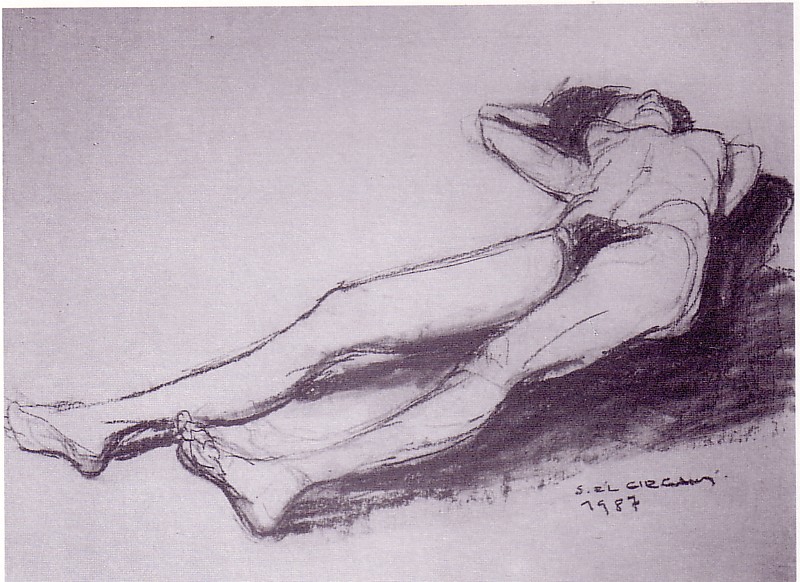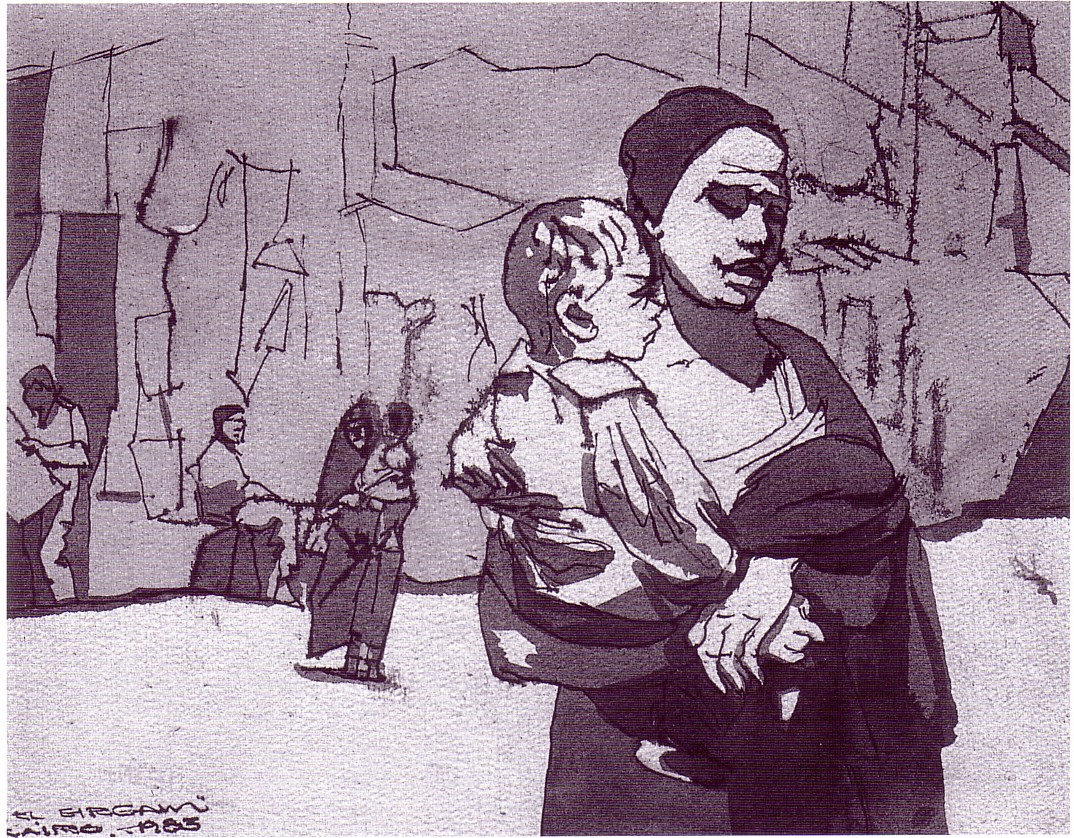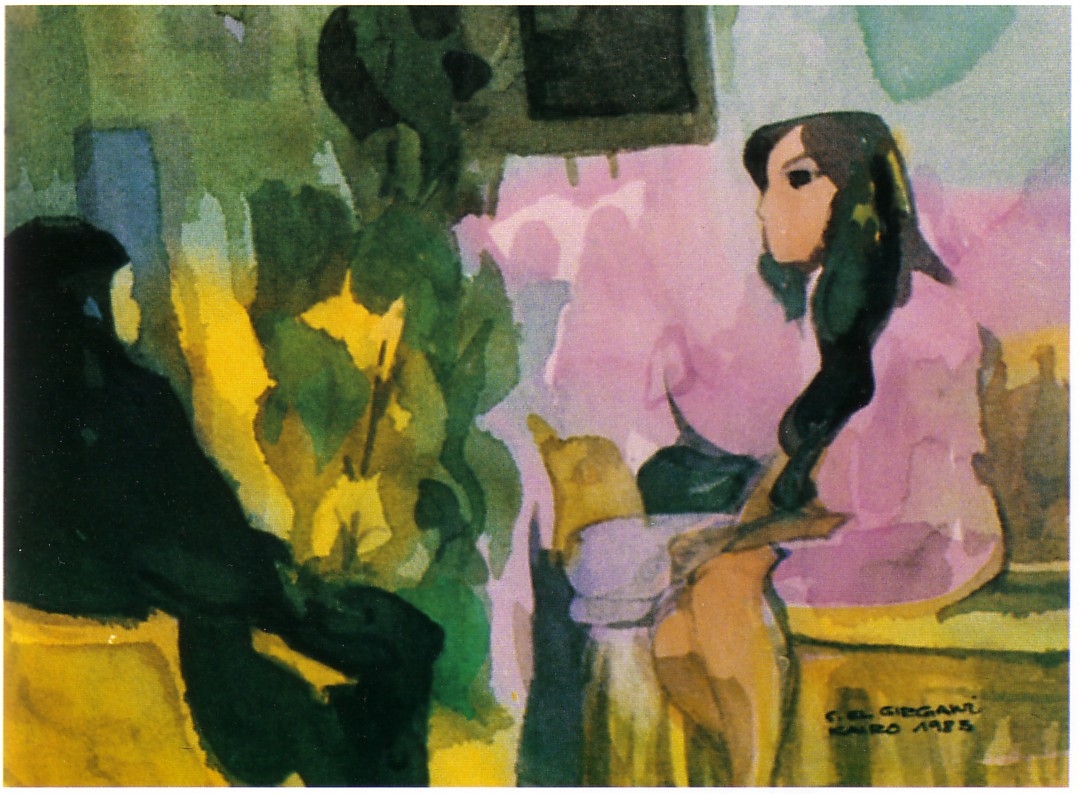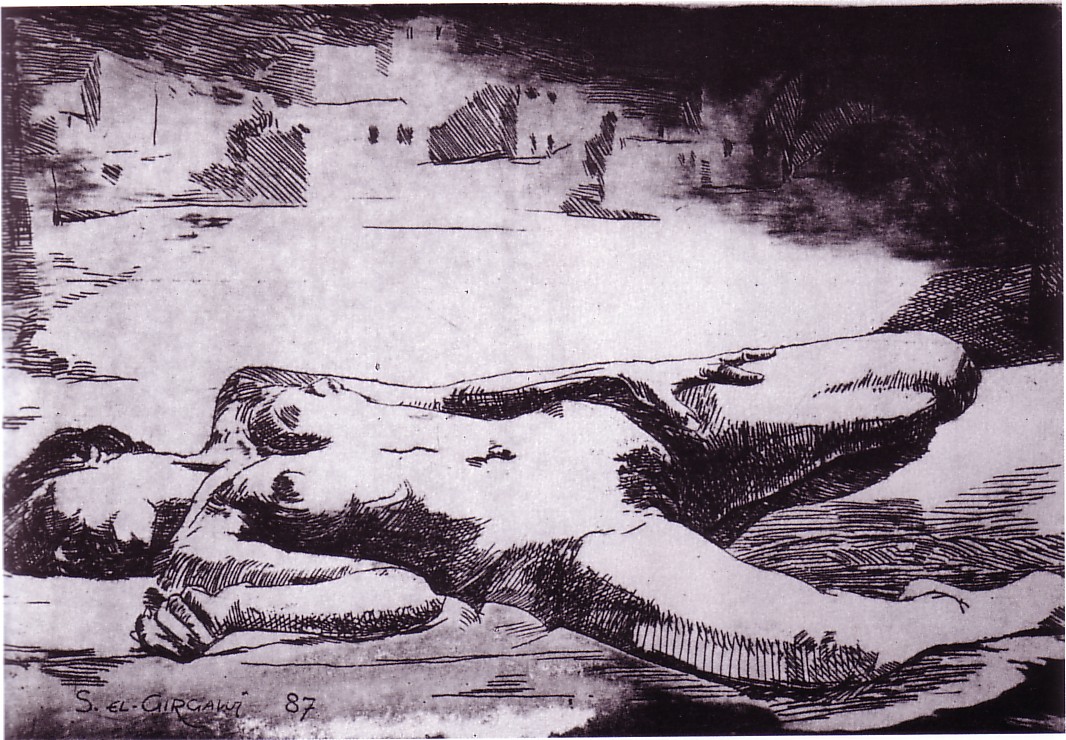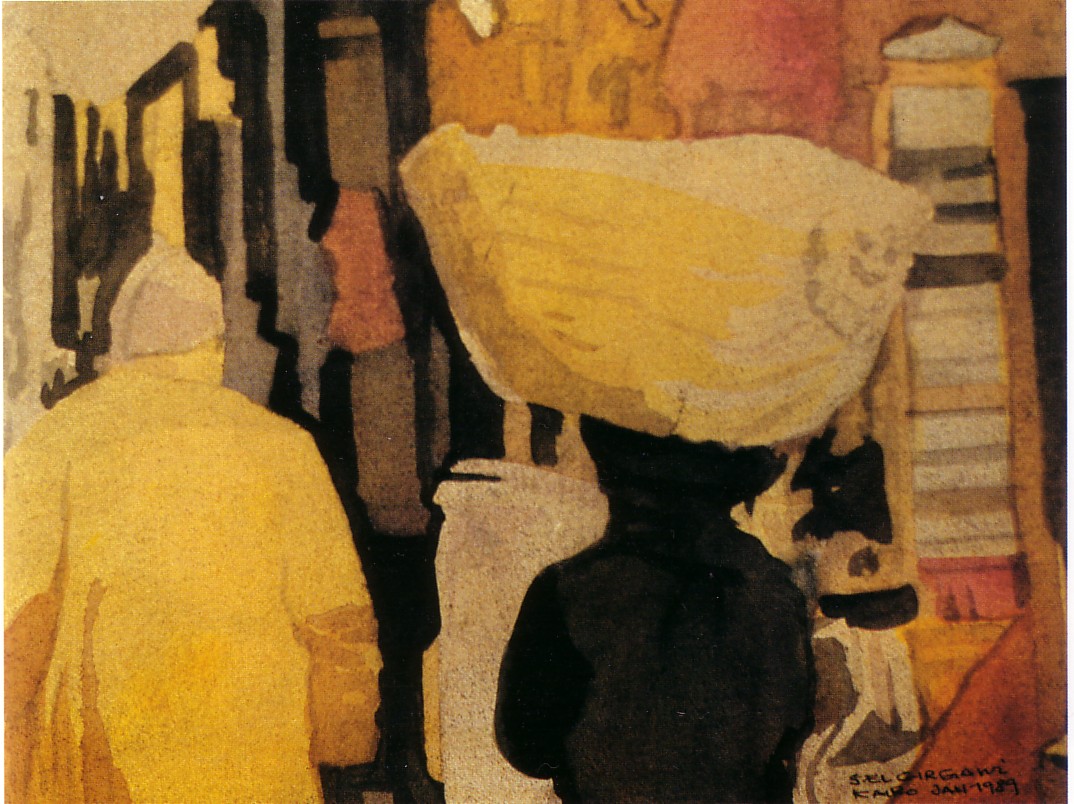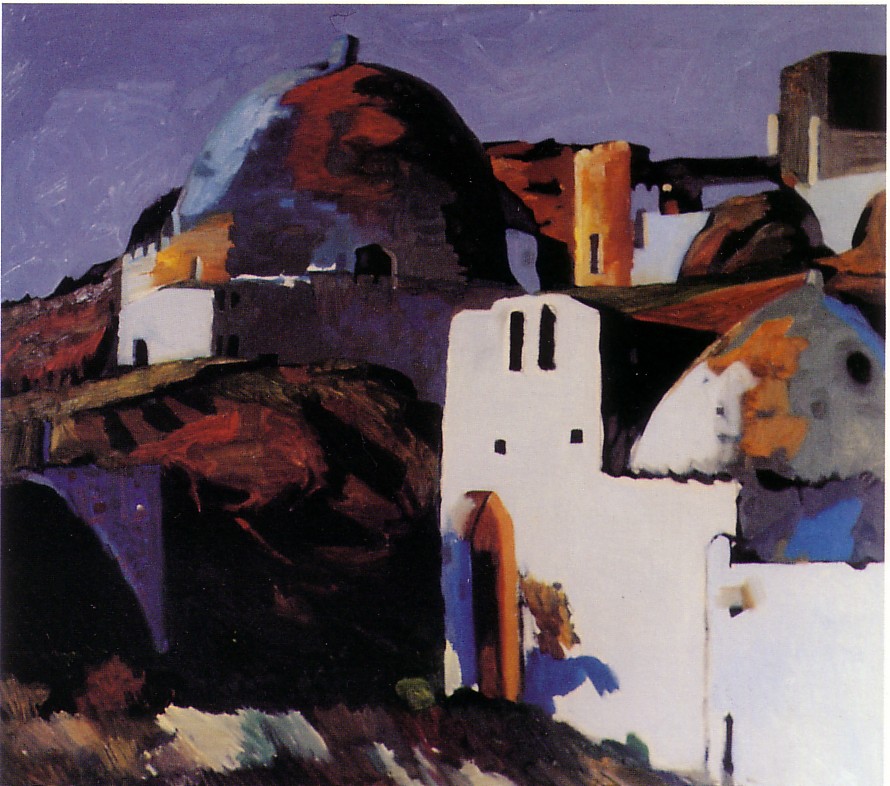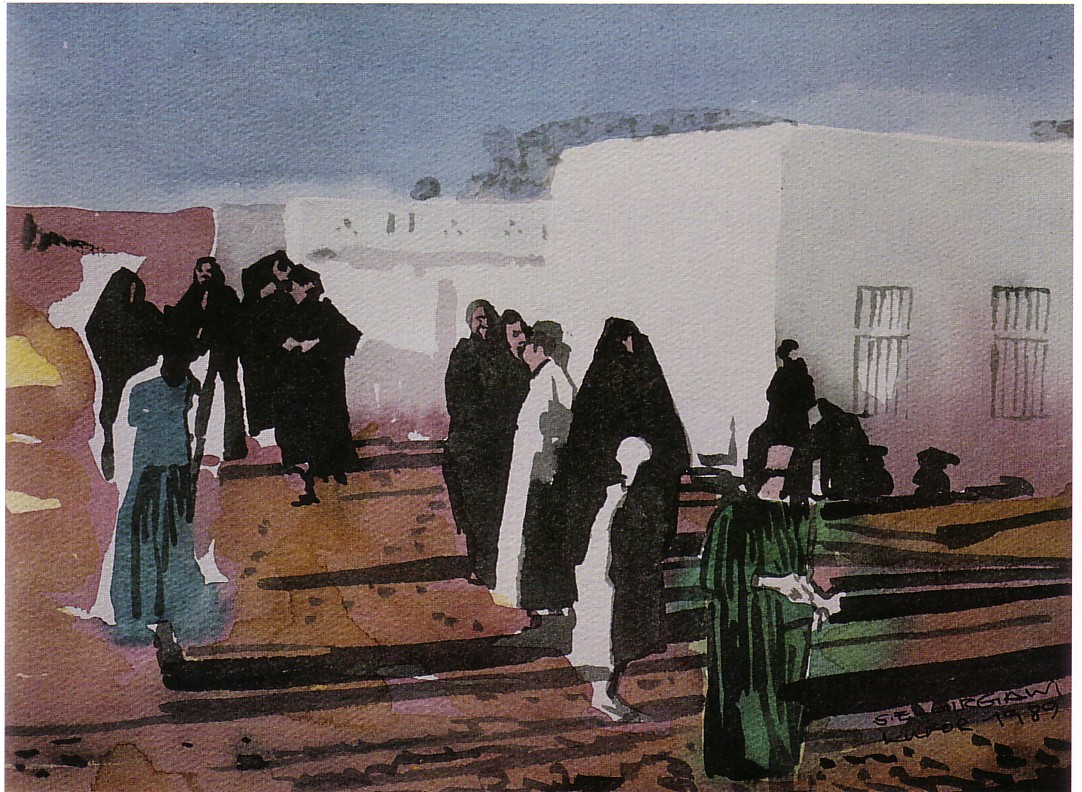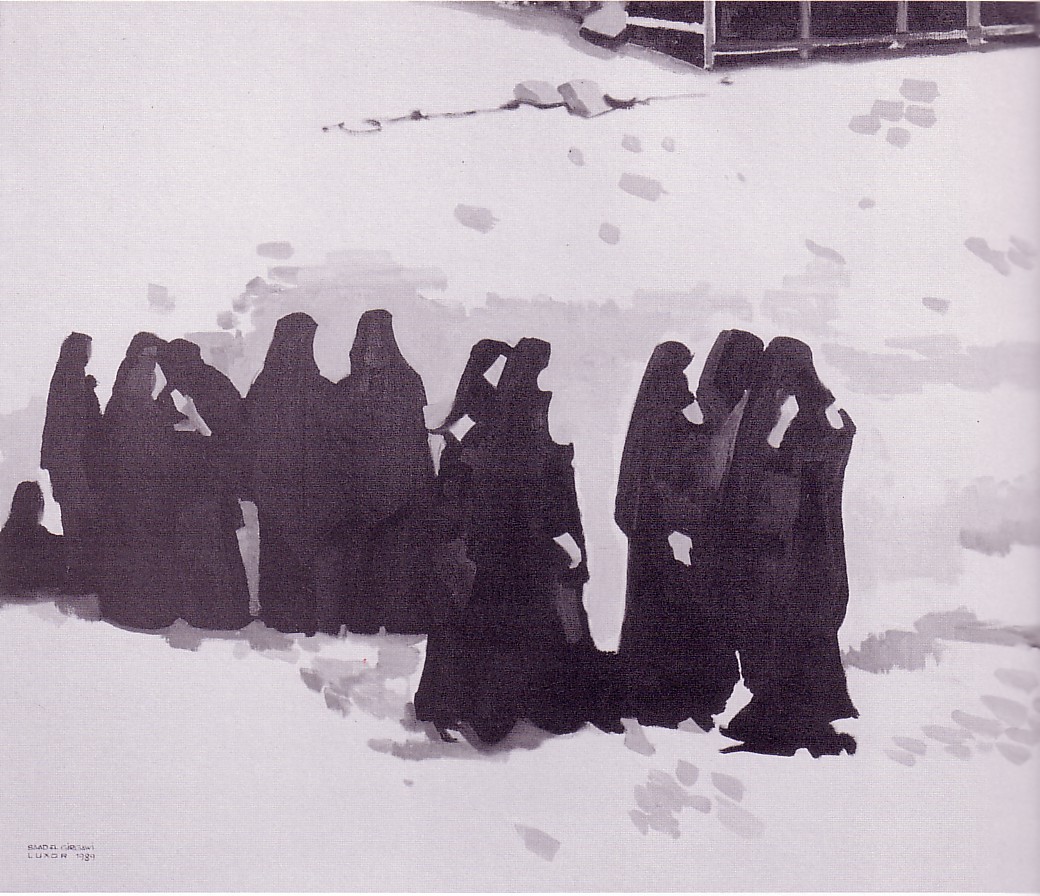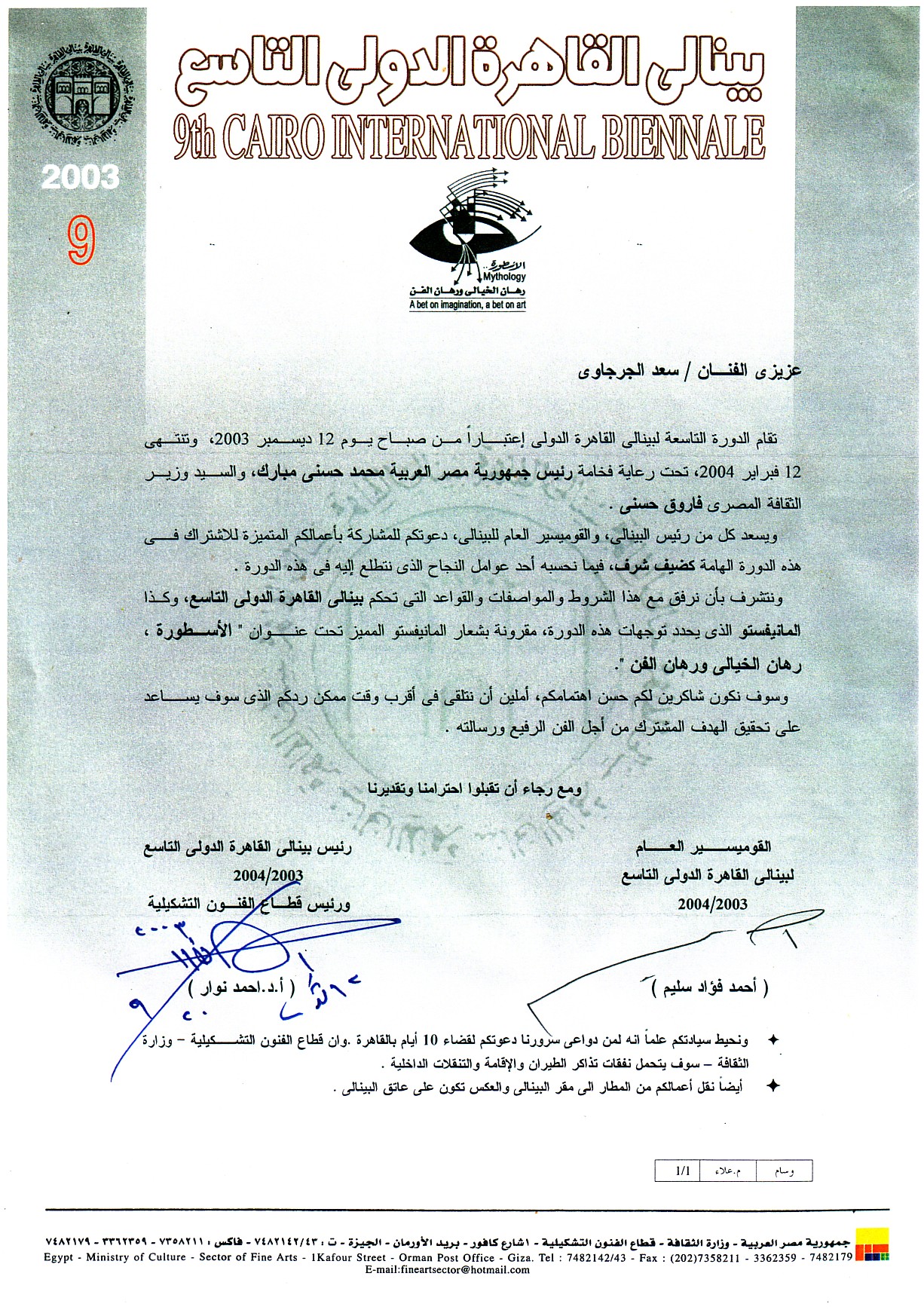No man is an island, no country, no artist of any place
in the world. And the events in Lebanon could not leave Saad el Girgawi
untouched. The form his commitment takes is quiet, and at the same
time disquieting. Death, even in its more massive, multiplied form, even
in genocide, comes always to concrete human beings. Each one of them suffers;
his or her own pain, in that sense, is always unique. But death, in some
historical situations, is also typical, a shared or collective experience.
In Saad’s work, The Dead One of Beirut , both the typical and the
individual are present; they converge in the same dead body in the foreground
of this lithography. The body is that of a nude young girl, or young woman
on an empty square. Stretched out, she is lying there, in – is it the sun,
or the moonlight? As if having given herself to a lover, tired, exhausted,
she rest there, in front of the invading darkness.
Her body raped, her lean arm still on her thigh, the
other as if grasping an amulet, she is separated from the distant houses,
a modern Antigone sacrificed by the civil war, a war instigated by the
rich of the city, those allied to outsiders, a bridgehead of globalization,
a class living on another planet, in another world.
This small lithography, done in 1987, gives a mute
answer to the events that devastated Beirut, an answer that is also a question,
asking us to look for, and identify the social forces responsible
for its suffering, its undoing.
Antigone was thrown to the wolves outside the town walls,
and so is this body, thrown to the voyeurs, a really disconcerting aspect
of this work. Silently, a pray for those without pity, she lies there on
the pavement as we stare at her. While the others, surviving victims as
well as perpetrators of such cruelty, know all to well how to remain
invisible.
The J’accuse inscribed in this lithography cannot
be overlooked. The human shape, its suffering at the moment of death
seem universal. But the context is specific, and so is the formal approach
of this work. The wood-cuts done by Chinese artists denouncing cruelties
committed by Kuomintang forces during the civil war ending in 1949
have their own strength and cannot be compared to Saad’s work; neither
can the works of Kaethe Kollwitz that opposed the insanity of imperialist
war. In The Dead One of Beirut, the strength of the composition
depends on the preponderance of horizontal lines and basically horizontal
shapes: The outlines of the square, and of the Arab houses, made
of clay bricks, with their emphasis on the horizontal, underscore the tiredness,
the suffering, the final breath of this outstretched, naked body, so close
to the earth. As a lifeless body she is married to the earth, but also
standing out from it: From her left shoulder to her left knee we see almost
a long straight line, and this while the left knee is slightly raised,
the leg bending, with the left foot disappearing under the buttocks… Saad
himself has observed once that “perpendicularity,” a preponderance of horizontal
and vertical lines, is characteristic of much of his work, and that he
owes it to his perception of the Egyptian landscape, its trees and horizons,
but also its architecture. This may well be true. At least the works rings
with a special quality that may well be derived from the socio-culture
it was fed by and responded to.
Like other works of Saad, the one called Women Carrying
A Heavy Load in a Cairo Alley (done in 1983) has no need of a central
perspective.
In fact is characterized by a multiple perspective (something
we might call, perhaps, “poly-perspectivistic”), the eyes of
the observer finding two focal points, one letting us intrude deeply into
the passageway on the left; the other sucking our eyes’ glance into the
dark hollow of a door scarcely visible on the right.
The scene shown in the painting is accentuated by a more
or less vertical rhythm of dark strokes of color, with few counterbalancing,
shorter, horizontal strokes, none of them quite as dark. |
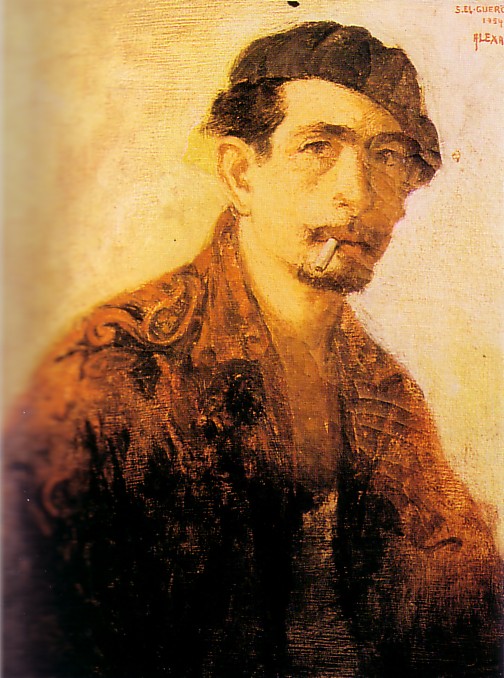 Self-Portrait,
Alexandria 1954 (oil on canvas)
Self-Portrait,
Alexandria 1954 (oil on canvas)
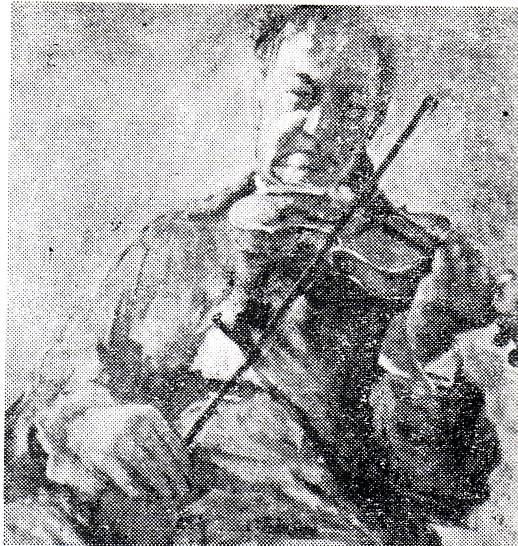
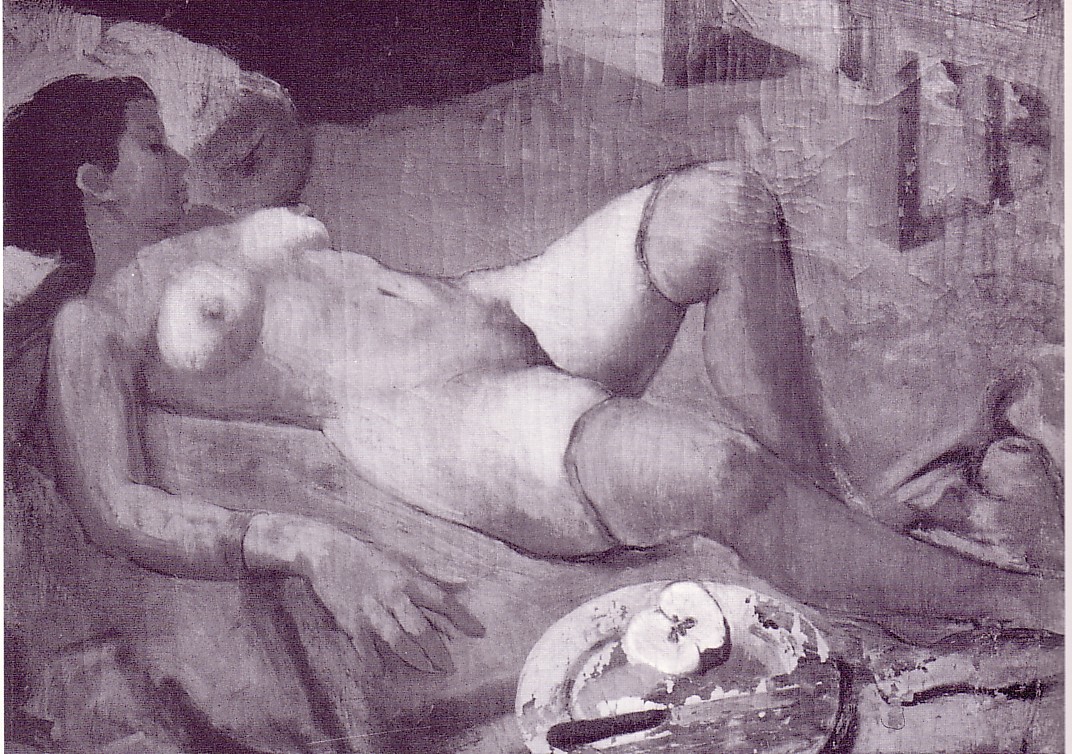
 Self-Portrait,
Alexandria 1954 (oil on canvas)
Self-Portrait,
Alexandria 1954 (oil on canvas)
